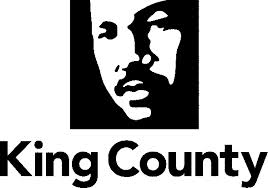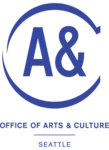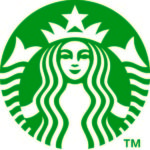
Case Study: Duwamish Alive! Coalition
Case Study: Duwamish Alive! Coalition
Founded: 2006
Headquartered: 6310 NE 74th St, Seattle, WA 98115
Program Locations: Sites along the Duwamish River
The word Duwamish holds many meanings: the indigenous people who occupied Puget Sound for thousands of years, the name of a river reaching from the Cascade Mountains to meet the sea at Elliott Bay, and an urban watershed, supporting a diverse mix of people from all over the world, working and living at the mouth of the river. For too long though, the river’s name was synonymous with toxic waste water, the result of spending much of the twentieth century as a dumping ground for the industrial uses along its banks. The federal Environmental Protection Agency declared the Duwamish a Superfund site in 2001, one of the most toxic in the nation. Though over forty toxins can be found in the fish, you might not know it from the looks of the fish or water. Valley residents comprising many low-income people from many communities where fishing is culturally ingrained, such as Cambodia, Vietnam, Mexico, and Somalia, fish regularly for fun and food. This brew of history and culture has resulted in pronounced health inequities, residents have a life expectancy that is eight years shorter than the Seattle and King County average (81.5 years). [Duwamish River Cleanup Coalition/Technical Advisory Committee (DRCC/TAG) and Just Health Action, Duwamish Valley Cumulative Health Impacts Analysis Community Fact Sheet].
Once designated a Superfund site, the Duwamish became a crucible of different concerns, all legitimate, but uncoordinated. Federal administrators, natural scientists, water quality experts, local public health officials, business leaders, cultural leaders, and, of course, citizens who simply wanted to live in tandem with what should be a life-sustaining waterway were stepping on each other’s toes in the early years of clean up. The Duwamish Alive! coalition was created to bring together communities, municipalities, non-profits, and businesses to preserve the human and natural habitat of the watershed. Interestingly, they centered on art as what they needed to cut through the noise and bring the different concerns together.
Social Impact: Saying it with art
Brightly colored fish consumption advisory signs line the banks of the Duwamish at public access points. Fastidiously translated into eight different languages, they warn readers against certain types of seafood and prescribe serving sizes and frequencies for others. Despite the signage, a study of 328 fishers encountered on the Duwamish found that only about half reported that they had heard something about how eating seafood caught from the Duwamish could affect people’s health. They did not appear to understand unseen chemical risks well, relying instead on word-of-mouth, taste, touch, and smell to determine if a fish was safe to eat. In a picture that tells a thousand words, Sharon Leishman, Executive Director of Duwamish Alive! recalls a photo of an advisory sign graffitied over with the words So What. As a result, coalition members went back and did art projects and hands-on activities to inform those groups about what was safe to eat out of the river and what was not. They had greater success: “Especially for immigrant communities, many of these cultures communicate through art and not abstracts, and not executive summaries. It is a more positive way of reaching communities, rather than long lists of ‘don’t do this,’ ‘don’t do that’ regulations.”
The long-term health of the river depends on people stewarding it and volunteers turning out to improve the habitat. However, with everything else happening in the city, it is easy to forget about Seattle’s only river, or write it off as a lost cause toxic site. To keep the community invested in the river, the vision for the Duwamish supported by the Duwamish Alive! coalition integrates culturally relevant public art at river access points and regular festivals and performances on the banks, and partnerships with educators to help youth experience the river through art. The Duwamish Revealed project put on by coalition members in 2015, for example, installed works by over 40 different artists at sites along the river. In contrast to academic presentations about water quality, art has an ability to connect with people on an emotional level and create a different level of investment for people of any age or background.
It is this kind of community investment that we need to sustain the health of the environment long after the clean-up is over. “When you are talking about what it is to be human, Nature and Art are basic elements of who we are and how we express ourselves,” explains Leishman. “When you see something, a video, a visual thing, or something well written that touches you personally, that can have far more impact than scientists that are doing technical information.”
Sponsors
Social Impact Study Community Conversations Sponsors
![]()
![]()






